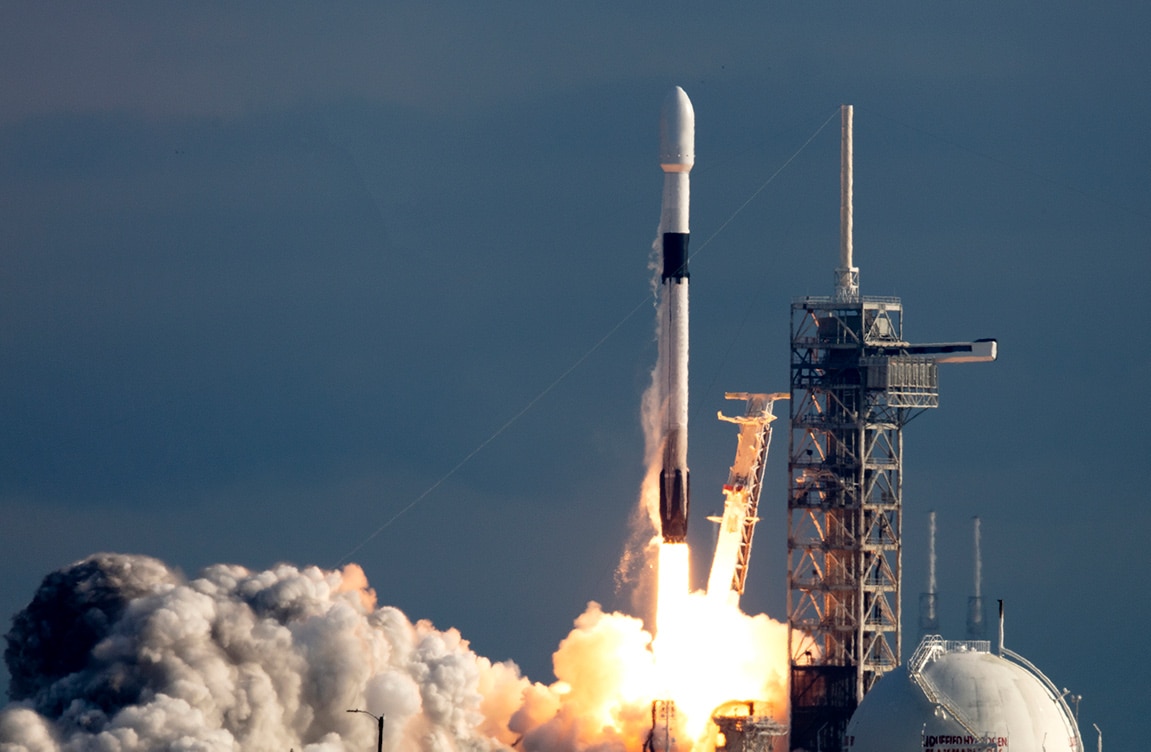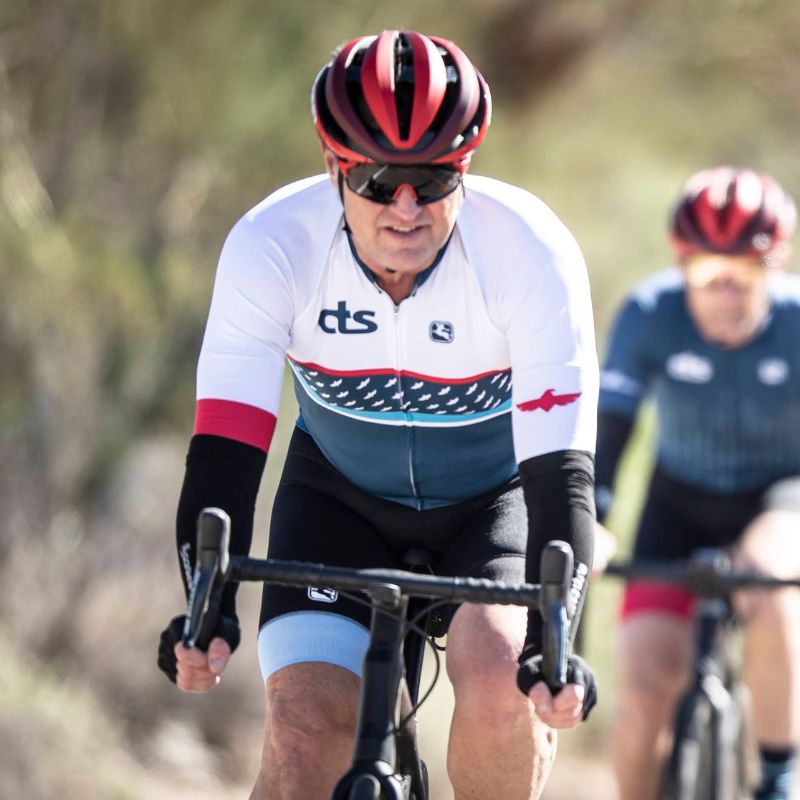
Reschedule Your Peak Fitness with These Lessons from NASA
By Chris Carmichael,
Founder and Head Coach of CTS
As a child of the 1960s, I have always been enthralled by the exploration of space. I was 8 years old when Neil Armstrong and Buzz Aldrin landed on the moon, and like many in my generation the space program provided inspiration that hard work, courage, and innovation could make dreams come true. The space program has had its ups and downs since then, and a scheduled launch earlier this week was set to be a high point – the first US launch of crewed spacecraft since 2011, and the first-ever NASA mission to send astronauts into orbit in a spacecraft built by a private company. On Wednesday, millions watched the livestream as the minutes ticked down to the launch, but at about 16 minutes to go, the launch was scrubbed and rescheduled for today (3:22pm Eastern Time on Saturday, May 30). In 2020, it seems even NASA’s events are getting postponed.
There’s a good training metaphor in Wednesday’s scrubbed launch. Space X and NASA spent years preparing for it, and with 16 min to go, it was off. There’s a rescheduled date, but that could get scrubbed, too. It’s a lot like this year’s race season. Just this week, the Boston Marathon that was originally rescheduled from April to October got cancelled altogether for 2020. Cycling and triathlon events have pushed their spring dates to the fall, and others have cancelled altogether. Months or years of preparation, for an uncertain outcome.
People and organizations handle delays in different ways. As athletes, there are important lessons to learn from the way NASA handles them.
Don’t force it
The more effort you put in to preparing for something, the more likely you are to go ahead with it despite heightened risks. I don’t know the figures, but I’d gather a scrubbed launch adds millions of dollars to the expense of a space mission, and I have no doubt there were voices urging Space X to go ahead with Wednesday’s launch despite the weather.
“Acceptable risk” is the key factor in all of these scenarios. Even in the best of conditions there are huge risks associated with launching rockets into space, but NASA and Space X have learned the hard way it’s better to scrub a launch than force it when the conditions are too far from ideal.
As an athlete you need to determine your tolerance for risk and have the discipline to recognize when your eagerness to launch is pushing you to take unreasonable risks. I encourage athletes to take on challenges where they might fail, but not where their unprepared to stay safe. When you’re not ready, when the route and the plan aren’t thought out, or when the storm is on the horizon, it’s better to scrub the launch and plan for success on another day.
Respect your window of opportunity
If you’re not aiming for anything, it probably doesn’t matter when you start your journey. But when you’re aiming to rendezvous with the International Space Station as it zips along at 17,000 miles per hour, there’s a limited window of opportunity. NASA and Space X can get the rocket from earth into space any time day or night, but the goal is put the spacecraft in the right place at the right time to deliver astronauts to the space station.
Athletes train for months and years to achieve peak fitness (the right place, state of readiness) for their goal event (the right time), so when goal events get postponed or cancelled athletes have to speed up or slow down or change their route in order to hit the new rendezvous point.
► Free Cycling Training Assessment Quiz
Take our free 2-minute quiz to discover how effective your training is and get recommendations for how you can improve.
It takes a long time to reach peak fitness and that performance level can only be maintained for a limited – and highly individual – amount of time. That’s your window of opportunity. I would argue that reaching peak fitness is a worthy achievement in its own right, even if it doesn’t correspond with a goal event. However, applying peak fitness to a goal event is perhaps the best expression or celebration of that achievement. If the goal event moves, you have to change your launch and trajectory.
It’s better to slow down than rush
If you are ahead of the curve in terms of readiness you can back off training to delay your peak, or change direction to insert a block of endurance or specificity training before getting back on track for peak performance. Training is cumulative, and in most cases pushing an event out a few months is an opportunity to reach even higher peak fitness. This isn’t always true; if you have little notice of a schedule change (fewer than 8 weeks), it can be difficult to reschedule a fitness peak.
Where athletes can get in trouble is when one event gets cancelled and they decide to shift their peak fitness to an event earlier in the calendar. For instance, if you were planning on peaking for an event in September and instead decide to peak for an event in July, that accelerated ramp up is riskier than pushing your peak back to November. To reach peak fitness sooner (or as close to peak fitness as you can get to in the limited time), you would need to be more aggressive with the application of training stress without additional time for available for recovery. To go back to our space program comparison, moving up a launch date means stepping through the pre-launch steps faster, without additional time for testing or inspections.
You only fail if you fail to learn
Whether your event gets moved by a few days, a few months, a whole year, or never happens at all, the process of preparation was not in vain. Even in space exploration, setbacks teach us how to do it better next time. And although the stakes are far less dramatic for endurance athletes, the principle still applies. If this season is the first time you’ve had to significantly shift the timing of your performance peak, work with a professional to improve the chances it will turn out well, and/or take note of the steps you take so you can evaluate their effectiveness later.
► FREE Mini-Course: Learn How to Maximize Your Limited Training Time
Learn step-by-step how to overcome limited training time and get faster. Walk away with a personalized plan to increase your performance.
"*" indicates required fields


Comments 2
For a unfortunate example of unacceptable risk, watch the video of the decision making that went into the launch that resulted in the challenger explosion.
as an everyday athlete, i’m hanging in there for the last 2 months, looking at maintaining a base as a challenge. (and it’s even more of a challenge given no group activities, less space outdoors and no interim ‘training’ events).
if this goes on another 2-4-6+ months i need another strategy…. 🙁